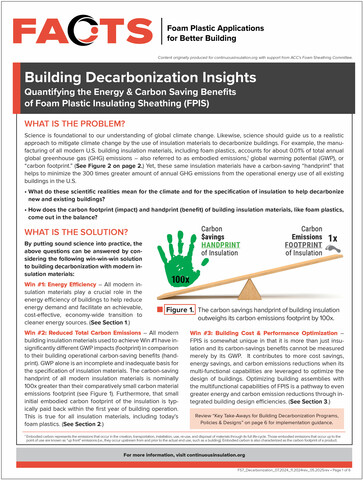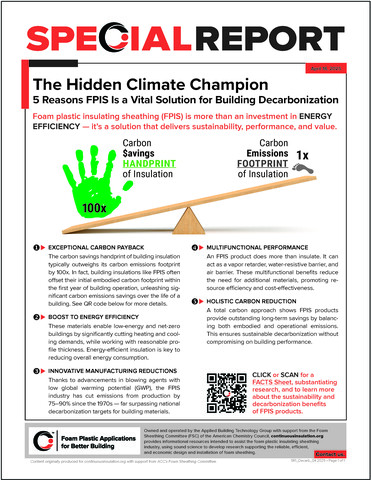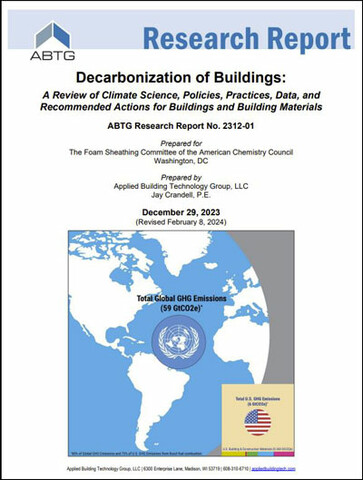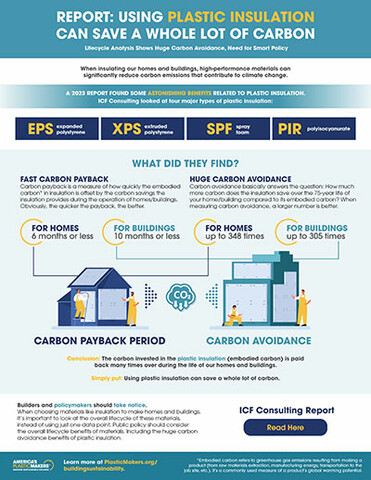

Sustainability is a broad topic encompassing important design and construction goals such as green building, resiliency, net-zero energy use, low life-cycle carbon footprint, and healthy living. In general, these goals are attained by exceeding minimum requirements in building and energy efficiency codes with a view of a building as a system. Various certification programs exist to assist in defining various levels and means of achieving these goals including well-known programs like LEED (commercial buildings), NGBS (residential homes), and Fortified (disaster resistance).
Whether seeking certification or simply applying green building principles to your building project, a high-performance building envelope provides the foundation needed to achieve the many facets and benefits of a green building. The following resources help set that foundation on solid ground.
Top Resources:
Robust building envelopes that meet the objectives of sustainability excel in addressing the following critical control layers, all of which can be achieved or enhanced by proper use of foam sheathing as continuous insulation with multi-functional applications:
The design of these control layers determine to what degree a building envelope is durable and energy efficient. It also determines to what degree the indoor environment can be controlled or conditioned cost-effectively for healthy living, comfort, and resiliency in normal conditions and times of crisis such as severe weather events, disasters, and even pandemics. Finally, use of renewable energy sources (such as solar or wind power) to achieve net-zero energy use or a “carbon-neutral” footprint relies heavily on having a robust building envelope.


Resources from the American Chemistry Council:
- How Insulation Boosts Energy Efficiency and Lowers Costs in 3 Charts
- Using Plastic Insulation Can Save a Whole Lot of Carbon
- Determination of Total Carbon Impact of Plastic Insulation Materials
- Unlocking Carbon Savings with Plastic Insulation Materials (Spring IIBEC Interface Online Exclusive)
- Advancing Sustainability and Circularity in Durable Plastic Markets: An Industry Roadmap
- The Benefit of a Whole Building Life Cycle Assessment or Carbon Analysis: Using Embodied and Operational Carbon to Holistically Analyze Building Emissions
Resources from Applied Building Technology Group (ABTG):
- The Role of Foam Plastic Insulation for Mitigating & Adapting to Climate Change
- Building Decarbonization Insights: Quantifying the Energy & Carbon Saving Benefits of FPIS
- Special Report
- Presentation: PPT | PDF
- Decarbonization of Buildings: A Review of Climate Science, Policies, Practices, Data, and Recommended Actions for Buildings and Building Materials
This new one-page resource distills our FACTS Sheet down to five reasons FPIS is a vital solution for building decarbonization.
Part of the FACTS Sheet Library, this resource works to quantify the energy and carbon saving benefits of foam plastic insulating sheathing (FPIS) by outlining a triple-win solution to building decarbonization with the use of modern insulation materials.
ACC created this concise leave-behind document for use with a variety of discussions about the importance of increased energy efficiency to reduce green house gas emissions, increase security, and improve housing affordability in America.
NYC Accelerator, in partnership with Con Edison and the American Chemistry Council presented a free webinar in August 2023 about how to use weatherization and building envelope upgrades as a tool to increase energy efficiency in buildings. Representatives from ACC's Foam Sheathing Committee covered how buildings can benefit from building envelope upgrades as well as what solutions might be right for a variety of projects.
This resource provides an overview of recent provisions designed to save builders and homeowners money on measures that improve overall energy efficiency of new residential construction, existing homes, and commercial buildings. The page also includes resources for using FPIS ci to achieve these tax incentives.
This article summarizes a recent study that found investing in simple home insulation upgrades can yield both a more comfortable living space and quite a healthy return. The full report from this Insulation Industry Opportunity Study can be found here.
Energy conservation is the core value proposition of building insulation. The insulation industry delivers a product that cost-effectively optimizes the thermal performance of buildings with insulation materials that are safe to use and promote a clean, low-carbon emissions environment. This statement recognizes the great improvements that the insulation industry has made in reducing its carbon intensity and outlines a common direction and united messaging for the future of these efforts.
This infographic shows how today’s plastics can help architects, owner/managers and specifiers to meet sustainability goals for new and retrofit building solutions in commercial, residential and infrastructure construction.
The benefits of green building are many. Some benefits are even surprising. From acoustics that help create quiet in a noisy world, to safety and security to help families or business owners sleep more soundly at night—there are green building solutions that can help.
Part 1 of a 3-article series
One baseball backstop supplier notes that it protects fans from stray or foul balls. In the realm of energy code compliance, a building envelope backstop is needed for similar reasons.
Part 2 of a 3-article series
It is well known that buildings consume more energy than the transportation or industry sectors, accounting for nearly 40 percent of total U.S. energy use.
Part 3 of a 3-article series
A major benchmark is net-zero energy ready performance. This is best achieved by creating a building that is very efficient in conserving energy first.
This concise resource from the North American Modern Building Alliance (NAMBA) outlines why foam plastic insulation is an energy-efficient choice.
Zero Energy Ready Home is part of the U.S. Department of Energy's Better Buildings initiative. Take a virtual tour of homes that are so energy efficient a renewable energy system can offset all or most of their annual energy consumption.
This mitigation guide from the U.S. Department of Housing and Urban Development (HUD) allows you to shop for specific disaster mitigation solutions and associated resources.
Community resilience focuses on deploying strategies that provide benefits before, during, and after disasters. The most commonly identified building-related strategies at the energy/resilience nexus have focused on passive survivability and reducing the urban heat island effect. While these approaches are a critical piece of the energy resilience nexus, they are not the only piece.
First published by the U.S. Department of Housing and Urban Development (HUD) in 2002, this guide has consistently been one of the Department’s moast popular publications. With this updated guide, HUD is offering new and refined guidance for designing durable homes for today’s housing industry—addressing critical topics, including water vapor management, envelope design, and natural hazards.
Building Science Corporation's Joseph Lstiburek looks at recovering from a "black water" Category 3 event through the lens of Houston after Hurricane Harvey.
This position document makes the case that while reduction in building energy use and improvement in equipment efficiency have both improved substantially in the past 40 years, additional energy use efficiency improvements are not only achievable but often the most cost-effective strategies in both new and existing buildings to achieve a more sustainable world.
What is resilient design and what is required for a home to be resilient? One important principle of resilient design involves trading active systems for passive ones whenever possible. The building envelope plays an important role when the power goes out or heating fuel supply is disrupted.